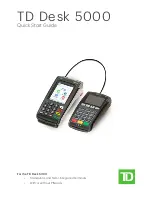
support@omnicomm-world.com | Installation manual Omnicomm 2.0 terminals v2.2
7
.16 | 36
The impulse signal is also used to count the number of events that occur more frequently than the speci
fi
ed
interval for collecting data. For example, if the task is to count the number of incoming public transport
passengers, the Terminal will sum up the number of times the door sensor was triggered and transmit
to Omnicomm Online the number of the passengers who entered (or exited) for each data collection
interval. In such a case, the calibration coe
ffi
cient must be preset as 1, because one triggering of the sensor
corresponds to one passenger.
Potential signal
is a signal that indicates the occurrence of any event taking place less frequently than
the data collection period. It is necessary to capture the fact that the event occurred, but the exact time of
its occurrence is not important (the accuracy of time determination within the data collection period will
su
ffi
ce). These events can include switching certain equipment on, lowering of an operating part of the
vehicle, opening of a door, etc. A value from the sensor that has a potential signal is logical: on (logical unit)
or o
ff
(logical zero). This status can be recorded for a long time, i.e. longer than the data collection period.
Activation (logical unit) is recorded by the Terminal; if the Terminal input receives a voltage signal that
is greater than the voltage activation threshold, and for more than 1000 s. Activation of potential input
(logical unit) is transmitted to Omnicomm Online as number 0, and logical zero - as number 0. This is shown
in Figure 49.
FIGURE 49. OPERATION OF POTENTIAL INPUT OF TERMINAL
If necessary, a potential signal, before being transmitted to Omnicomm Online, can be inverted, i.e.
activation signal (logical unit) can be converted into deactivation signal (logical zero), and vice versa.
Should I set up impulse type or potential type? Which one should I choose and how?
You should set up an impulse signal when you need to count the number of events or triggers; you should
choose a potential signal when you need to capture the fact that the event occurred, determine the current
status of the monitored object and calculate the time the object was in this status.
Let us explain this with an example: Suppose you have a door opening sensor. If you need to count how
many times the door was opened during certain period of time, then you should con
fi
gure the input of
the Terminal as the impulse one. Then, each opening event will result in a non-zero value in the batch that
is sent to Omnicomm Online for the corresponding data collection period. However, it will not be possible
for us to assess how long the door was open and what state it is in now. If you need to monitor the time of
opening and the current state, you must con
fi
gure the input type as potential. This is shown in Figure 50.
















































